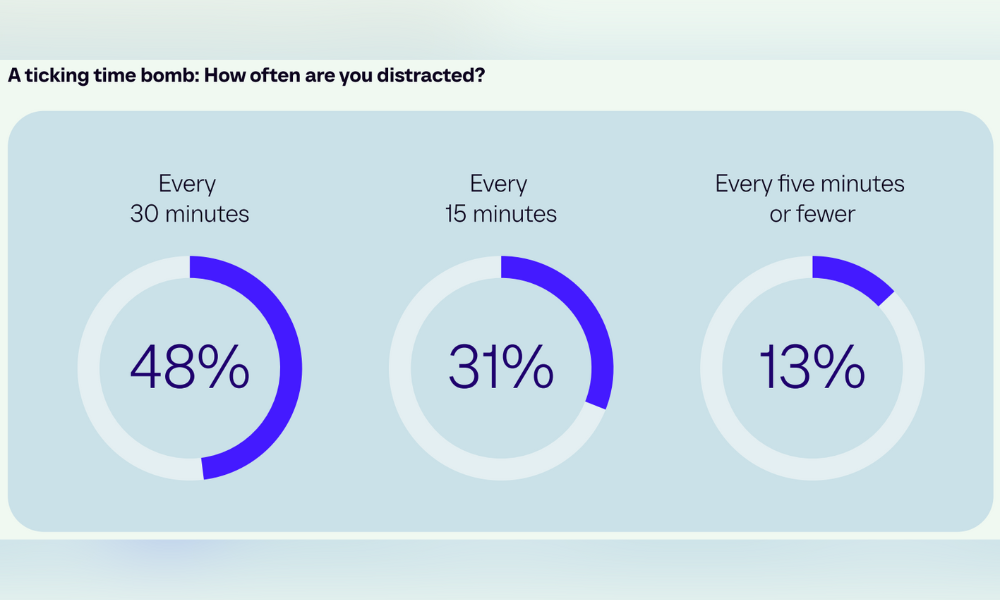
How can HR leaders provide real-time updates without overloading employees' notifications?

Effective communication with employees is essential for organisations, but an overload of messages can overwhelm the workforce and have unintended consequences.
Steve Baxter, CEO of Mandoe Media, recently pointed out that HR leaders face the challenge of balancing the need for real-time updates with the risk of sending excessive notifications.
"Striking a balance between necessary updates and excessive notifications is tricky," he told HRD. "If employees feel overwhelmed, they might tune out important messages."
Excessive digital notifications can have negative consequences on employee wellbeing and productivity, according to recent findings from Unily.
More than three in four employees (77%) said notifications from workplace digital tools are a distraction, with 48% saying they are distracted by it every 30 minutes.

Source: Unily's Digital Noise Impact Report
Baxter said it is crucial that HR leaders identify whether announcements or updates require immediate attention.
"Establish guidelines or tiers of urgency so that employees know which updates require immediate attention versus those that are 'good to know,'" he said. "While some announcements are truly urgent, grouping routine updates into daily or weekly bulletins can reduce 'notification fatigue.'"
He also advised keeping updates short and direct, as well as using visuals, such as charts of KPI dashboards on digital signage for quick comprehension.
"Encouraging employees to share how they feel about the frequency of updates helps refine the process," he said.
Baxter offered the advice as he underscored the importance of providing real-time updates for employees.
These are immediate, on-the-spot information shared with employees as events happen, such as the announcement of recent achievements, sales milestones, shift changes, or other operational messages.
They can be pushed out via corporate digital signage in communal areas, instant messaging platforms, or dedicated employee apps.
"When employees see updates in real time, they feel more included in the organisation's direction and decision-making. This openness can dispel rumours or misinformation since everyone has equal access to the same data and news as it unfolds," Baxter said.
"In turn, this supports a 'no surprises' approach, resulting in higher levels of trust and a culture where feedback and dialogue are encouraged, ultimately reducing silos."
Employers seeking to provide effective real-time updates should start with a clear communication strategy.
This strategy should identify who is responsible for generating updates, how they are approved, and which channels are most appropriate for different types of messages, according to Baxter.
"Pilot the strategy on a small scale, perhaps a single department or project team, before rolling it out company-wide," he said. "Gather feedback, adjust as needed, and consistently reiterate why real-time communication matters to the broader company mission."